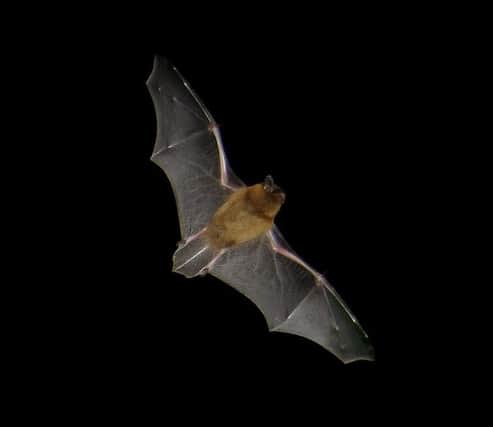Midge-eating bats in huge Scottish comeback


Recent surveys show populations of the threatened common pipistrelle, the second smallest UK bat species, have increased by nearly 80 per cent in the past six years.
Conservationists believe special protection measures and a move towards less harmful chemicals for roofing work are major factors in the increase.
Advertisement
Hide AdAdvertisement
Hide AdThe common pipistrelle, which often roosts in crevices around the outside of buildings, is a midge-eating machine - devouring as many as 3,000 of the blood-sucking insects every night.
Bat populations have been experiencing a massive decline over the past century due to loss of habitat and development works.
All bats, the only mammals capab;e of powered flight, are legally protected in the UK, both by domestic and international laws.
New studies for government nature agency Scottish Natural Heritage (SNH ) and the Bat Conservation Trust (BCT) have revealed that soprano pipistrelle and Daubenton’s bat populations have been stable since 1999. However, the common pipistrelle population is estimated to have risen by around 79 per cent since 2009.
The increase is good news for Scotland as the presence of bats is a good indicator of the health of habitats as a whole - if the nocturnal hunters are thriving, it’s more likely that plants and insect populations are also in good shape.
But experts say many threats remain and the continued survival of these important creatures may depend on help from Scottish householders.
“Although this is certainly good news, many threats still exist for bats,” according to Robert Raynor, SNH’s mammal specialist.
“There are nine or ten species of bat in Scotland, and we still need to improve our survey coverage so we can better understand what is happening with their numbers – not just the most common three.
Advertisement
Hide AdAdvertisement
Hide Ad“Everyone can play their part to help encourage healthy bat populations. Bat boxes can provide safe roosts, as will letting bats make use of your roof for the part of year.
“Planting your garden with flowering plants, trees and shrubs that attract insects can also help.”
There are more than 1,000 bat species in the world - ranging from the minute bumblebee bat up to the giant flying fox, whose wingspan can reach 2m.
Scotland is home to 10 species, five of which are considered to be common or widespread. These are the common pipistrelle, soprano pipistrelle, Daubenton’s bat, brown long-eared bat and Natterer’s bat. The rest are considered rare or occur only in specific areas.
The common pipistrelle is found in many habitats, including woodland edges, hedgerows, gardens, parks and near open water.
Bats are intelligent and long-lived. They have complex social lives despite their resemblance to mice are more closely related to humans. They are the only mammals capable of powered flight.
They use a sophisticated echo-location navigation system while flying, emitting a series of high-pitched sounds and listening to the returning echoes to create a “sound picture” of their surroundings – even in total darkness.
The latest figures come from the BCT’s national bat monitoring programme, which relies on bat enthusiasts helping with roost counts, hibernation surveys, field surveys and waterway surveys.
Advertisement
Hide AdAdvertisement
Hide AdAnne Youngman, Scottish officer for the Bat Conservation Trust, said: “We would like to say a huge thank you to all the volunteers taking part in this citizen science project across Scotland.
“We really appreciate them for donating their time to help us find out how Scottish bats are doing.
“We are delighted to be able to show that their hard work and dedication allows us to produce a positive picture for the population of common pipistrelle.”